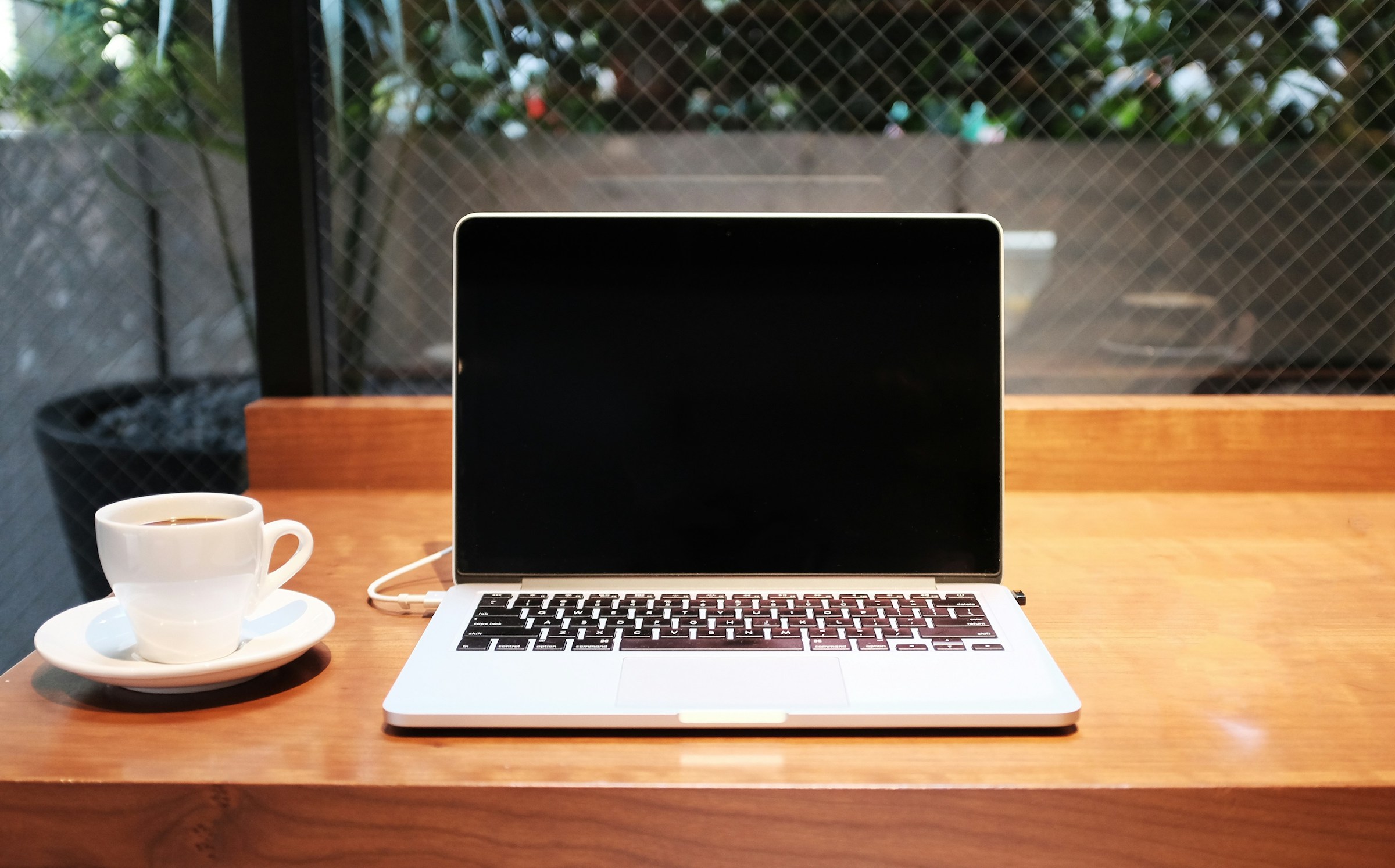A broken laptop can be a major inconvenience, disrupting your work, studies, and entertainment. While some issues may require professional repair, many common problems can be fixed at home with the right tools and knowledge. This comprehensive guide will take you through various steps to diagnose and fix a broken laptop, covering everything from hardware issues to software problems, and providing detailed instructions and tips for each step.
Understanding Laptop Components
Main Components of a Laptop
Understanding the main components of a laptop is essential for diagnosing and fixing issues. Key components include:
- Motherboard: The central circuit board that connects all components.
- CPU (Central Processing Unit): The brain of the laptop, responsible for processing instructions.
- RAM (Random Access Memory): Temporary storage used by the CPU to store and access data quickly.
- Hard Drive/SSD (Solid State Drive): Permanent storage for the operating system, programs, and files.
- Battery: Provides power when the laptop is not plugged in.
- Screen/Display: The output device for visual information.
- Keyboard and Touchpad: Input devices for typing and navigation.
- Power Supply/Charger: Provides power to the laptop and charges the battery.
- Cooling System: Includes fans and heat sinks to dissipate heat generated by the CPU and GPU.
Common Tools for Laptop Repair
Before attempting any repairs, gather the necessary tools:
- Screwdrivers: Precision screwdrivers in various sizes.
- Pry Tools: Plastic or metal tools for opening the laptop casing.
- Tweezers: For handling small components and connectors.
- Multimeter: For testing electrical components.
- Thermal Paste: For reapplying thermal paste to the CPU/GPU.
- Compressed Air: For cleaning dust from internal components.
- Anti-static Wrist Strap: To prevent static damage to sensitive components.
Diagnosing Laptop Problems
Identifying Hardware Issues
Hardware issues can manifest in various ways, including:
- No Power/No Boot: The laptop doesn’t turn on or boot up.
- Overheating: The laptop becomes excessively hot and may shut down unexpectedly.
- Screen Problems: Issues like flickering, no display, or dead pixels.
- Battery Issues: The battery doesn’t charge or drains quickly.
- Keyboard and Touchpad Problems: Keys not responding or erratic touchpad behavior.
- Noisy Fan: Loud or constantly running fan.
Identifying Software Issues
Software issues can cause similar symptoms to hardware problems but can often be fixed without replacing components:
- Operating System Errors: Blue screens, boot loops, or system crashes.
- Slow Performance: The laptop is slow to respond or frequently freezes.
- Malware and Viruses: Unwanted software causing system instability.
- Driver Issues: Problems with hardware drivers causing malfunctions.
- Software Conflicts: Programs interfering with each other or the operating system.
Step-by-Step Fixes for Common Laptop Problems
Fixing No Power/No Boot Issues
- Check the Power Source: Ensure the laptop is plugged in and the power outlet works. Test with a different charger if possible.
- Inspect the Battery: Remove the battery (if possible) and try booting with just the power adapter.
- Reset the Laptop: Perform a hard reset by holding the power button for 15-30 seconds.
- Check for Loose Connections: Open the laptop and ensure all internal connectors are securely attached.
- Test the Power Button: Use a multimeter to check if the power button is functioning correctly.
- Inspect the Motherboard: Look for visible damage, burn marks, or swollen capacitors.
Fixing Overheating Issues
- Clean the Cooling System: Use compressed air to remove dust from fans, vents, and heat sinks.
- Reapply Thermal Paste: Remove the old thermal paste from the CPU/GPU and apply a new layer.
- Check for Obstructions: Ensure nothing is blocking the vents or airflow.
- Replace Faulty Fans: If the fans are not spinning or making noise, replace them.
Fixing Screen Problems
- Check the Display Settings: Ensure the brightness and display settings are correctly configured.
- Test with an External Monitor: Connect the laptop to an external monitor to check if the issue is with the screen or internal components.
- Inspect the Display Cable: Open the laptop and ensure the display cable is securely connected.
- Replace the Screen: If the screen is cracked or damaged, replace it with a compatible model.
Fixing Battery Issues
- Calibrate the Battery: Fully charge and then completely discharge the battery a few times to recalibrate it.
- Check the Charger: Ensure the charger is working and providing the correct voltage.
- Replace the Battery: If the battery is not holding a charge, replace it with a new one.
Fixing Keyboard and Touchpad Problems
- Clean the Keyboard: Use compressed air and a soft brush to remove debris from the keyboard.
- Check for Software Issues: Ensure the correct keyboard and touchpad drivers are installed.
- Replace Faulty Components: If certain keys or the touchpad are not working, replace them.
Fixing Noisy Fan
- Clean the Fan: Use compressed air to remove dust and debris from the fan.
- Lubricate the Fan Bearings: Apply a small amount of lubricant to the fan bearings if accessible.
- Replace the Fan: If the noise persists, replace the fan with a new one.
Software Fixes
Fixing Operating System Errors
- Run Startup Repair: Use the operating system’s built-in startup repair tool to fix boot issues.
- Restore from a System Backup: Use a system restore point or backup to revert to a previous, stable state.
- Reinstall the Operating System: If all else fails, reinstall the operating system to fix persistent errors.
Improving Slow Performance
- Remove Unnecessary Programs: Uninstall programs you no longer use to free up resources.
- Increase RAM: Add more RAM if your laptop supports it to improve performance.
- Upgrade to an SSD: Replace the hard drive with a solid-state drive for faster boot times and data access.
- Optimize Startup Programs: Disable unnecessary startup programs to speed up boot times.
Removing Malware and Viruses
- Run a Full System Scan: Use antivirus software to scan for and remove malware and viruses.
- Use Malware Removal Tools: Utilize specialized tools like Malwarebytes to remove stubborn malware.
- Update Security Software: Ensure your antivirus and malware protection software are up to date.
Fixing Driver Issues
- Update Drivers: Use the Device Manager to update drivers for all hardware components.
- Roll Back Problematic Drivers: If a recent driver update caused issues, roll back to the previous version.
- Reinstall Drivers: Uninstall and reinstall drivers to fix corruption or compatibility issues.
Resolving Software Conflicts
- Identify Conflicting Programs: Use the Task Manager to identify programs causing conflicts.
- Update or Reinstall Programs: Ensure all programs are up to date and reinstall any causing issues.
- Disable or Uninstall Conflicting Software: If a program continues to cause problems, disable or uninstall it.
Advanced Repairs
Replacing the Hard Drive/SSD
- Back Up Data: Ensure all important data is backed up before replacing the drive.
- Remove the Old Drive: Open the laptop and carefully remove the old hard drive or SSD.
- Install the New Drive: Insert the new drive and secure it in place.
- Install the Operating System: Install the operating system on the new drive and restore your data.
Replacing the Motherboard
- Back Up Data: Backup important data before starting.
- Disassemble the Laptop: Carefully remove all components connected to the motherboard.
- Remove the Old Motherboard: Unscrew and remove the old motherboard.
- Install the New Motherboard: Place the new motherboard and reconnect all components.
- Reassemble the Laptop: Reassemble the laptop and test to ensure everything is working correctly.
Replacing the Screen
- Identify the Screen Model: Find the exact model of your laptop screen for compatibility.
- Disassemble the Display: Carefully open the display assembly and disconnect the old screen.
- Install the New Screen: Connect the new screen and secure it in place.
- Test the Display: Power on the laptop to ensure the new screen is working correctly.
Upgrading RAM
- Identify Compatible RAM: Check your laptop’s specifications for compatible RAM modules.
- Open the RAM Compartment: Access the RAM compartment by removing the appropriate cover.
- Install New RAM: Insert the new RAM modules and secure them in place.
- Test the RAM: Power on the laptop and check if the new RAM is recognized and functioning.
Cleaning and Maintenance
Regular Cleaning
Regular cleaning can prevent many common laptop problems:
- Clean the Keyboard and Touchpad: Use compressed air and a soft cloth to clean the keyboard and touchpad.
- Clean the Screen: Use a microfiber cloth and a screen cleaner to keep the display clean.
- Clean the Vents: Use compressed air to remove dust from the vents and cooling system.
Maintenance Tips
- Update Software Regularly: Keep your operating system and software updated to ensure optimal performance and security.
- Use a Cooling Pad: Use a cooling pad to help dissipate heat and prevent overheating.
- Avoid Physical Damage: Handle your laptop with care to prevent physical damage.
- Monitor System Performance: Use monitoring tools to keep an eye on system performance and catch issues early.
When to Seek Professional Help
While many laptop issues can be fixed at home, some problems may require professional assistance:
- Severe Hardware Damage: Visible damage to the motherboard, CPU, or other critical components.
- Persistent Software Issues: Issues that persist despite troubleshooting and reinstalling the operating system.
- Data Recovery: Professional help may be needed to recover important data from a damaged or failing hard drive.
- Complex Repairs: Repairs that require specialized tools or expertise, such as replacing a motherboard or fixing a liquid-damaged laptop.
FAQs About Fixing a Broken Laptop
How can I tell if my laptop has a hardware or software problem?
Diagnose hardware issues by checking for physical damage, testing components, and using external peripherals. Software issues often involve error messages, system crashes, or slow performance.
What should I do if my laptop won’t turn on at all?
Check the power source, charger, and battery. Perform a hard reset, inspect for loose connections, and test the power button. If these steps don’t work, professional help may be needed.
How can I fix a laptop that overheats and shuts down?
Clean the cooling system, reapply thermal paste, check for obstructions, and replace faulty fans. Using a cooling pad can also help.
Why is my laptop screen flickering, and how can I fix it?
Check display settings, test with an external monitor, inspect the display cable, and consider replacing the screen if necessary.
What should I do if my laptop battery doesn’t hold a charge?
Calibrate the battery, check the charger, and replace the battery if it no longer holds a charge.
How can I fix a laptop keyboard with unresponsive keys?
Clean the keyboard, check for software issues, and replace faulty keys or the entire keyboard if needed.
What causes a noisy laptop fan, and how can I fix it?
Dust buildup, worn bearings, or a faulty fan can cause noise. Clean the fan, lubricate bearings, or replace the fan.
How can I fix a laptop with a slow performance?
Remove unnecessary programs, increase RAM, upgrade to an SSD, and optimize startup programs.
What should I do if my laptop is infected with malware?
Run a full system scan, use malware removal tools, and update security software.
How can I fix driver issues on my laptop?
Update, roll back, or reinstall drivers using the Device Manager.
Why is my laptop screen blank even though it’s powered on?
Check display settings, test with an external monitor, and inspect the display cable. Consider replacing the screen if necessary.
How can I fix a laptop that freezes frequently?
Check for software conflicts, update drivers, and ensure adequate cooling. Reinstall the operating system if needed.
What should I do if my laptop won’t connect to Wi-Fi?
Check the Wi-Fi settings, update the network driver, and troubleshoot the router. Reset the network settings if necessary.
How can I replace a broken laptop screen?
Identify the screen model, disassemble the display, install the new screen, and test the display.
What should I do if my laptop hard drive fails?
Back up data, replace the hard drive, install the operating system, and restore data from the backup.
How can I upgrade the RAM on my laptop?
Identify compatible RAM, open the RAM compartment, install new RAM modules, and test the system.
Why is my laptop making clicking noises, and how can I fix it?
Clicking noises may indicate a failing hard drive or fan. Back up data, replace the hard drive or fan, and test for other issues.
How can I fix a laptop with distorted or no sound?
Check audio settings, update audio drivers, and test with external speakers or headphones. Replace faulty internal speakers if necessary.
What should I do if my laptop touchpad is not working?
Check touchpad settings, update drivers, and clean the touchpad surface. Replace the touchpad if it remains unresponsive.
How can I fix a laptop that keeps crashing?
Run diagnostic tests, check for software conflicts, update drivers, and ensure adequate cooling. Reinstall the operating system if necessary.
Conclusion
Fixing a broken laptop can be a daunting task, but with the right knowledge and tools, many common issues can be resolved at home. Understanding the components, diagnosing problems, and following step-by-step fixes will help you restore your laptop’s functionality.
For more complex issues or persistent problems, seeking professional assistance is recommended. With patience and effort, you can get your laptop back in working order and extend its lifespan.



